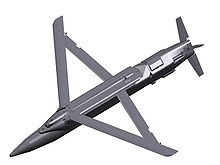Tel al-Sultan attack
When Israel invaded Rafah and ordered the evacuation of its east, some citizens fled to other parts of the city, like Tel al-Sultan, seeking safety.However, videos and satellite images showed that the location of the airstrike was inside the refugee camp itself, and some sources alleged Israel deliberately targeted civilians.[13] The attack came shortly after Hamas launched rockets at Tel Aviv, the first salvo fired at the city since approximately late January 2024.[23] Satellite imagery confirmed that new tents continued to be built in this area from 6 to 26 May, indicating Palestinian civilians were unaware that Israel had changed the zone's borders.A video verified by NBC News showed Palestinians screaming for help in tents "engulfed by flames" with civil defense crews attempting to stop the fire and rescue people.[63][64] An investigation by Amnesty International found that Yassin Rabia, commander Khuweiled Ramadan, and at least two other Hamas militants were killed, while Khaled Nagar was only injured.Erika Guevara Rosas, senior director of Amnesty, said that "The Israeli military would have been fully aware that the use of bombs that project deadly shrapnel across hundreds of metres and unguided tank shells would kill and injure a large number of civilians sheltering in overcrowded settings lacking protection.Mark Cancian, a Marine Corps Reserves colonel, said the large debris field indicated the bombs appear to be programmed to detonate in the air before impact.[57] Trevor Ball, a United States Army explosives technician, said the bombs' fragments can travel up to 600 meters, concluding "so that just doesn't check out if they're trying to limit casualties".[49] Amnesty International stated that, given the large kill radius of the GBU-39 bomb, its usage in a densely populated civilian area constituted an indiscriminate attack, and therefore should be investigated as a war crime."[50] Frederic Gras, a French munitions analyst, questioned this reasoning, arguing "any explosion starts a fire as soon as flammable products are in the vicinity.[70] Multiple sources pointed out that refugee camps typically contain flammable material, such as cooking gas canisters which could have been ignited by the airstrike.[5] On 27 May, Israeli officials initially told their American counterparts that they believed the fire was caused by shrapnel from the strike igniting a nearby fuel tank."[78] A lawyer with the Palestinian Centre for Human Rights stated the attack showed Israel was ignoring the International Court of Justice's interim orders.[81] Some Israelis celebrated the attack, likening it to the Jewish holiday Lag BaOmer, in which bonfires are lit to commemorate a second century Rabbi.The analogy was made by Israel's Channel 14 senior journalist Yinon Magal, who posted pictures on social media captioned: "The main lighting of the year in Rafah" and by i24NEWS' Naveh Dromi commenting "Happy Holiday."The comparison was also made by far-right rapper Yoav Eliasi, who posted videos on Telegram in celebration of the attack and also likened it to the holiday.[121] Following the attack, several aid organisations in this part of the city were forced to close their operations and move them to other parts of the Gaza Strip, including the Al Quds field hospital run by the Palestine Red Crescent Society, a clinic supported by Doctors Without Borders and kitchens run by the World Central Kitchen.
Rafah massacreRafah offensiveattacks on refugee camps during the Gaza warGaza genocideTel al-SultanGaza StripCoordinatesAirstrikesIsraeli Air ForceGaza warTimelineOutlineOctober 7 Hamas-led attack on IsraelMilitary engagementsSderotNahal OzOfakimNova music festival massacreNetiv HaAsaraAlumimBe'eriKfar AzaKissufimNir OzNir YitzhakIsraeli invasion of the Gaza StripBeit HanounGaza CityJabalia IKhan YunisAl-QararaShuja'iyya IShuja'iyya ambushShuja'iyya IIInsurgency in the North Gaza StripKhan Yunis IIKhan Yunis IIINorth GazaIsraeli incursionsTulkarm IOperation Summer CampsTulkarm IIBattle of NetzarimIsraeli bombing of the Gaza StripRefugee campsJabalia31 OctoberAl-Fakhoora schoolAl-Shati refugee campAl-MaghaziSchoolsPalestinians evacuating GazaHealth facilitiesAl-Ahli Arab HospitalAl-Shifa HospitalAmbulanceNasser HospitalAttacks on religious sitesRafah strikesFlour massacreKuwait RoundaboutAttack on journalists in LebanonFriendly fireIDF killing of hostages in Shuja'iyyaAl-Mawasi (May)Al-Sardi schoolNuseiratAl-Mawasi (June)Al-Shati and Tuffah9 July 2024 attacksAl-Awda schoolAl-Mawasi (July)Al-Shati (July)Khan Yunis (July)Khadija schoolHamama schoolAl-Tabaeen schoolDeir al-BalahAl-Mawasi (September)Al-Jawni schoolTulkarm CampDeir al-Balah mosqueRufaida schoolAl-Aqsa hospitalKilling of Shaban al-DalouAbu Hussein schoolBeit Lahia (19 October)Beit Lahia (29 October)Kerem Shalom aid convoy lootingAl-Mawasi (December)Nuseirat (December)War crimes and effectsHamas war crimesHostage crisisPrisoner exchangeIsraeli war crimesIsraeli blockade of GazaFamineAI-assisted targetingMass detentionsSouth Africa v. IsraelICC arrest warrantsGaza Strip mass gravesTortureExecutions and assassinationsKilling of journalistsList of journalistsGaza humanitarian crisisChildrenHealthcare collapsePremature babiesImpacts and repercussionsDiplomatic impact2023 ceasefire2025 ceasefireCalls for a ceasefireEconomic impactOther theatersRed Sea crisisOperation Prosperity GuardianAttacks on the MV Maersk HangzhouOperation Poseidon ArcherMarlin Luanda missile strikeOperation AspidesSinking of the MV RubymarAttacks on the MV Tutor